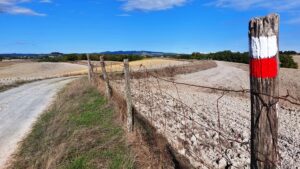Articolo disponibile anche in: Italian
The law launched by the Tuscan Region for the recovery of abandoned buildings in rural areas has “good intentions.” But the law has only a “partial approach to recovering the heritage of rural buildings and some questionable criteria which cut out provisions for most of the structures, rendering it applicable only in a few cases”.
The request of the “Rete” of Tuscan technical and scientific professionals to revise the law starts from this premise. These professions cover the following: agronomist and forestry, architects, chemists, geologists, surveyors, engineers, industrial and agrarian experts.
“The law,” explain the professionals, “pertains to buildings which are totally abandoned and have not had electricity contracts for at least five years. Property for which an application for amnesty was presented in 1985 and those which follow town regulations are excluded from the law”.
These criteria, according to the “Rete”, don’t take into consideration the situation of the actual rural structures and rural areas of Tuscany, which is much more complex and varied. Essentially, the law will not be applicable to the majority of rural buildings which are in condition of semi abandonment or under use.
“The owners,” declare the professionals of the Rete, “who have maintained at least a minimum protection of the buildings or connected farm buildings, will be penalized in respect to those who have completely abandoned the building. This protection includes, for example, an energy contract necessary to run a well”.
The Rete also notes how the awarding of bonuses based on volume isn’t the only way to stimulate the recuperation of the rural building patrimony and that it often isn’t an effective measure, especially in areas characterized by lower values where abandonment is more common.
The real risk, therefore, is to see the objectives of the law frustrated and consequently not developing the hoped for reevaluation of the rural territory and its buildings (whose maintenance constitutes an essential protection of phenomena of hydro-geological deterioration) or the protection of the cultural and scenic identity of our territories.
According to the professionals, a more studied approach is necessary in regards to the lowering of hidden costs of long and contradictory authorized processes, in an effort to overcome considerable expenses that weigh upon the recuperation of the buildings, and to stimulate energy efficiency and respect for environmental resources through forms of subsidy.
“We ask, therefore,” they conclude, “for the opening of a discussion for the adoption of provisions which approach the entire theme and which are characterized by a strategy of sustainability over time”.


